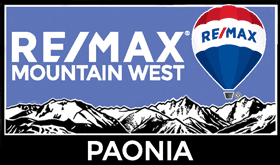Conservation Easements
A conservation easement is a permanent way to both preserve open space, (including farms or graze lands) and to obtain tax credits in the process. Through the process of conservation easements, it is possible for a landowner to afford to develop a portion of land while saving enough open space to make it attractive to a planned development.
More and more landowners are choosing the option of conservation easements over selling out or developing. As values for farm and ranch land increase, the temptation is to sell out. By opting to create a conservation easement, a landowner can afford to preserve a rural way of life for future generations.
Conservation easements are flexible tools, and can be tailored to the needs of the landowner and the goals of the easement.
The technique used to create a conservation easement is a contract between a landowner and a land trust (the easement holder), which contains permanent restrictions on the use or development of land. The document prevents future development because it is legally recorded, although home sites can be reserved.
The conservation easement must be for a public purpose, such as protection of wildlife habitat, protection of open space, or the preservation of farm land. Conservation values can be for important historic, scenic, natural or agricultural characteristics of property. Once identified, the conservation easement places restrictions on the property to protect these values. A landowner who signs an easement is granting the easement holder the right to enforce those restrictions.
Please contact Bob and Linda Lario for more information on conservation easements, and for a Contact List of people who can help in this process.
Easement Questions
- Can Conservation easements be donated, mortgaged or sold? Yes.
- Is public access required? Not generally.
- What are the restrictions in a conservation easement? No subdivisions, however limited development is allowed. No mining, commercial or industrial uses, however ranching, farming, cottage industries and lodging are allowed. Water rights must stay with the property, and there must be proper timber and land management.
- What is the role of a land trust? A land trust is the recipient of a conservation easement. They can be private, or non-profit, or even a governmental entity. Their role is to enforce the development restrictions, and make sure the land is properly managed. A cash donation to the land trust as an endowment for monitoring and enforcement of the conservation easement is often part of the transaction.
- How is a conservation easement valued? An appraiser uses the “before and after” approach, defining the value of the property as the difference between the property value before the conservation easement and the value of the property after it is encumbered by the conservation easement. The appraisal for a conservation easement must be done carefully, since it can come under close scrutiny by the IRS, the Colorado Dept of Revenue, and land trusts. If a landowner wants to take advantage of the tax credits available, the easement must be valued to determine its worth. In most cases, the appraisal must be done 60 days in advance of placing the easement.
- How does one set up a conservation easement? An attorney familiar with this law should be consulted, to make sure that the conservation easement is written to comply with all the requirements, especially those of the I.R.S.
- What documents will be required to set up the Conservation Easement?
- An appraisal, dated within 60 days of placing the easement.
- Conservation Easement, negotiated between the landowner and the land trust.
- Title Insurance.
- Present conditions report, that documents the biological and physical condition of the property at the time the easement is placed, and that assesses the current condition of each restriction listed in the conservation easement.
- What is a realistic timeline for setting up a Conservation Easement? In Colorado, most easement transactions can be completed within 90 days. Difficulties may arise, as in any transaction, and could extend the time period to 120 days.
Please contact Bob and Linda Lario for more information on conservation easement, and for a Contact List of people who can help in this process.

